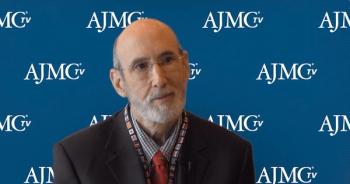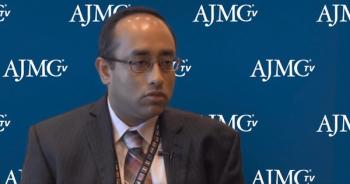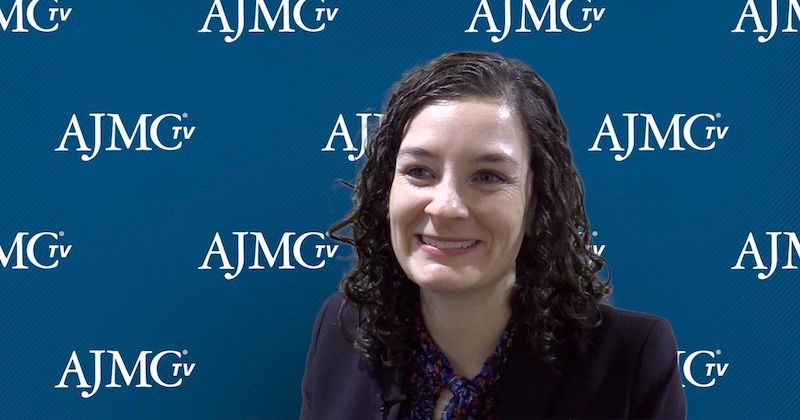
Clinical
Latest News
Latest Videos
CME Content
More News

Children with acute myeloid leukemia (AML) who come from neighborhoods with lower income have poorer outcomes and may have access to care issues, said Lena Winestone, MD, assistant professor of pediatrics at the University of California, San Francisco.

To avoid the toxicities associated with use of chemotherapy, there has been progress in developing and utilizing chemotherapy-free therapies to treat mantle cell lymphoma, said Michael Wang, MD, professor in the Department of Lymphoma and Myeloma at MD Anderson.

Historically, patients with severe acute graft-versus-host disease (GVHD) and severe chronic GVHD as determined by the National Institutes of Health have poor survival. New research being presented at the 61st American Society of Hematology Annual Meeting & Exposition shows that earlier treatment with novel therapies can improve outcomes for these patients.

There are no cures available to patients with polycythemia vera (PV), who are first treated with hydroxyurea (HU); ruxolitinib is approved as a second-line therapy in both Europe and the United States for patients who are intolerant of or resistant to HU. Two abstracts being presented at the 61st American Society of Hematology Annual Meeting & Exposition explore the use of ruxolitinib in patients with PV, either in patients who first tried HU or had ruxolitinib as a first-line therapy.

Every week, The American Journal of Managed Care® recaps the top managed care news of the week, and you can now listen to it on our podcast, Managed Care Cast.

Researchers may have identified a way to delay the progression of multiple sclerosis (MS) by blocking a molecule that controls the entry of B cells into the brain, which results in deterioration of tissue.

This week, the top managed care news included research that shows stents may offer no more value than drugs for some heart patients; a ban on flavored tobacco products gains momentum; a survey finds most American families struggle with social factors that impact health.

The FDA has approved a new treatment for adult patients with acute hepatic porphyria (AHP) a rare genetic disorder. Givlaari is an RNA interference therapeutic targeting aminolevulinic acid synthase 1. Simultaneously, Alnylam Pharmaceuticals announced a new framework for value-based agreements to help patients gain access to the treatment.

A House committee approves a bill to ban all flavored tobacco products; anal cancer rates are on the rise; the debate continues over competing healthcare measures.

Precision medicine may offer new hope to children with high-risk cancer, but only if families and healthcare professionals are fully educated on the benefits and limitations of precision medicine trials, according to a study in Journal of Clinical Oncology.

Healthcare is changing due to a combination of technological improvements and rising costs. For instance, more than half of surgical procedures now take place in an outpatient environment, but, as with many things in healthcare, there isn’t a lot of transparency. Today on Managed Care Cast, we speak with Michael Abrams, managing partner of Numerof & Associates, about what we know about patient safety in outpatient settings.

Ruxolitinib should be added to treatment of patients with graft-versus-host disease (GVHD) are not improving on steroids or whose symptoms return after tapering, said David Snyder, MD, associate chair of the Department of Hematology & Hematopoietic Cell Transplantation at City of Hope.

Genomic profiling of tumors has become standard in oncology, but tumors in children often do not have actionable DNA aberrations, requiring another way to effectively target treatment for these patients. A study in JAMA Network Open found that RNA sequencing from pediatric and young adult patients may be a feasible approach.

Clinical characteristics of women with chronic obstructive pulmonary disease (COPD) are important for primary care clinicians to consider in order to improve COPD awareness since women often go underdiagnosed, according to results from a recent study.

A recent study, published by JMIR Research Protocols, demonstrated the effectiveness of implementing a digital HIV care navigation intervention for young racial and ethnic minority men and transwomen.

A study investigating the cardiovascular responses to nitroglycerin in migraine found that migraineurs who developed a migraine-like attack in response to nitroglycerin demonstrated greater systemic cardiovascular responses compared with non-headache controls.

This week, the top managed care news included Medicaid tightening the reins on supplemental payments; employers needing more data to control benefit costs; experts saying prior authorization mostly burdens patients.

Adult patients with beta thalassemia will now have an FDA-approved treatment available with luspatercept-aamt (Reblozyl). The therapy treats the rare inherited blood disorder, which requires patients to have regular red blood cell transfusions.

The Leap Motion Controller system used with serious games may be an effective option for a rehabilitation tool for improving coordination, speed of movements, and fine upper limb dexterity in patients with Parkinson disease, according to a recent study, published by the Journal of NeuroEngineering and Rehabilitation.

Although patient-reported outcomes (PROs) are increasingly being used to understand treatment effectiveness, there is still a lot unknown about what measures patients find most important. Two abstracts presented at the American College of Rheumatology’s annual meeting evaluated PROs in rheumatology and how PRO measures can be used in clinical care.

Pain is common in patients with rheumatologic diseases, and 2 abstracts presented at the American College of Rheumatology’s annual meeting analyzed opioid use in these patients, examining patient features associated with chronic use and changing opioid use patterns in the wake of the opioid epidemic.

Patients with rheumatoid arthritis (RA) not only deal with functional impairment, but also pain, fatigue, and other symptoms driven by interleukin (IL)-6 levels. In a session at the American College of Rheumatology’s annual meeting, 2 speakers examined the role of IL-6 in RA and treatment using sarilumab (Kevzara) to target and block IL-6 signals.

Prithviraj Bose, MD, of MD Anderson Cancer Center discusses treatment options for patients progressing with myelofibrosis.

New technologies that can monitor sleep, track itching patterns, or assist with pain are improving outcomes and quality of life for patients with rheumatologic conditions, according to panelists at the American College of Rheumatology’s annual meeting.

Monotherapy was a big topic of conversation at the American College of Rheumatology’s annual meeting, held November 8-13 in Atlanta, Georgia, and 2 abstracts highlight the efficacy of sarilumab as a monotherapy in patients with rheumatoid arthritis.













































